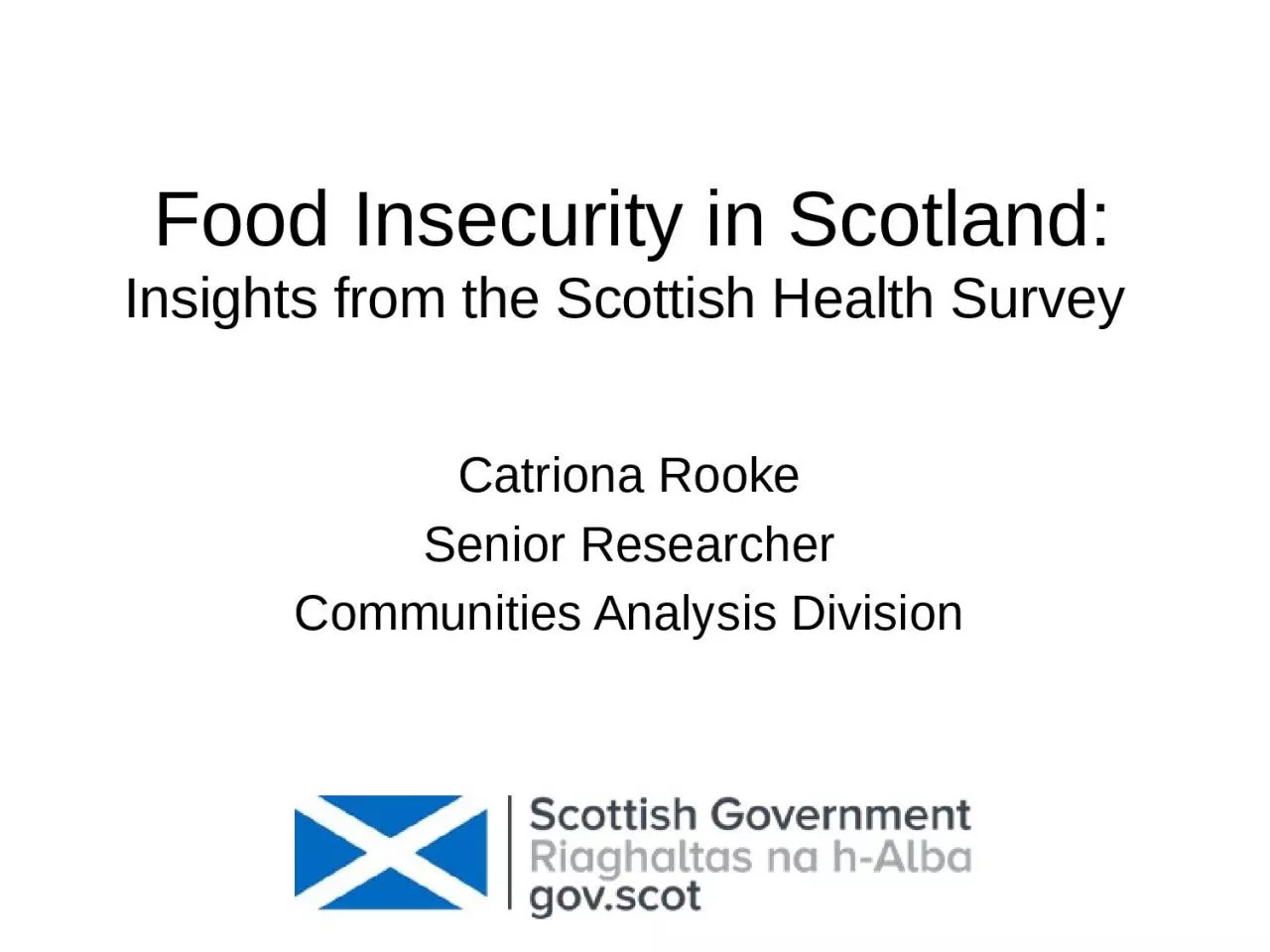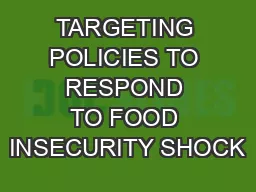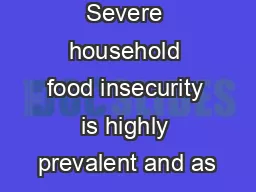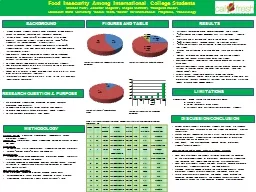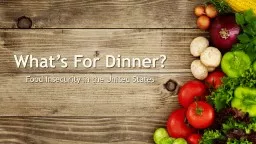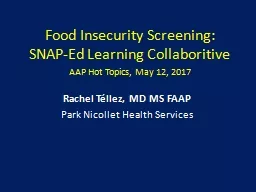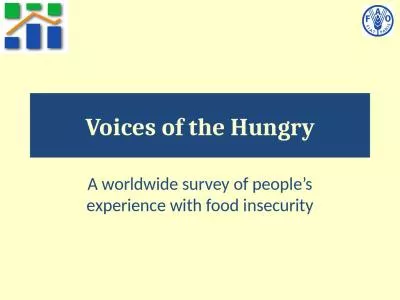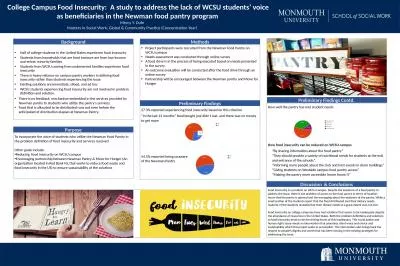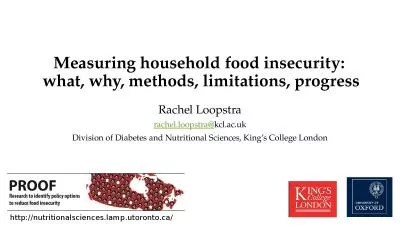PPT-Food Insecurity in Scotland:
Author : eleanor | Published Date : 2024-03-15
Insights from the Scottish Health Survey Catriona Rooke Senior Researcher Communities Analysis Division Background Trussell Trust report steep rises in food bank
Presentation Embed Code
Download Presentation
Download Presentation The PPT/PDF document "Food Insecurity in Scotland:" is the property of its rightful owner. Permission is granted to download and print the materials on this website for personal, non-commercial use only, and to display it on your personal computer provided you do not modify the materials and that you retain all copyright notices contained in the materials. By downloading content from our website, you accept the terms of this agreement.
Food Insecurity in Scotland:: Transcript
Download Rules Of Document
"Food Insecurity in Scotland:"The content belongs to its owner. You may download and print it for personal use, without modification, and keep all copyright notices. By downloading, you agree to these terms.
Related Documents

